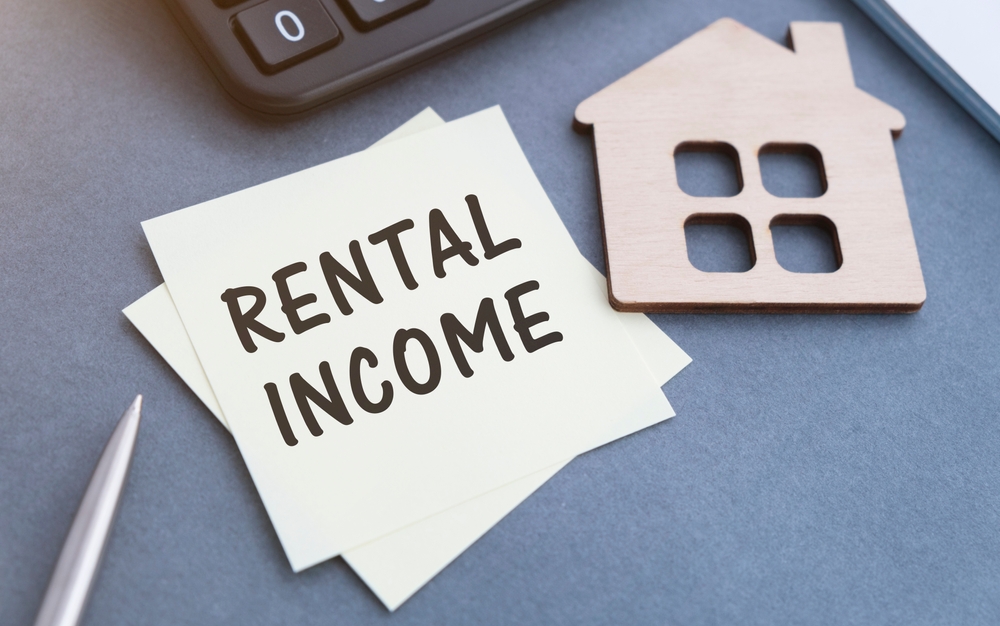For many investors, rental return on a property is a primary focus and a key component of their wealth building strategy. They are a particular consideration for investors looking to generate additional regular income from their properties, like retirees and rentvestors. Some experienced investors also believe that high rental returns are the key to rapidly growing a property portfolio.
However, because of how they are calculated, rental returns on property are highly influenced by market movements. The average returns can also vary significantly, depending on the specific market segment. Here we look at why this is, how to calculate rental returns, and the best ways to maximise them.
How to calculate rental returns on property
Put simply, a property’s rental return is a measurement of the income it generates, compared to its cost. Often referred to as the “rental yield”, it effectively represents the return on investment a property provides. Acknowledging this, it is generally expressed as a percentage and is most widely used to compare new investment opportunities.
There are actually two different ways to calculate rental yields, which can provide vastly different results. Which method you should use will depend on the level of detail you have and accuracy you require.
Gross rental yield
This is the easier method, which quickly and easily provides a rough indication of the return a property could provide. To make this calculation, you need to know the:
- Property Value: This is usually the price the investor would have to – or did – pay to secure the property. The value is worked out as of today’s date.
- Annual Rental Income: This is the amount of rent the investor would likely be – or is currently – receiving over a year. This can be worked out using the weekly (multiply by 52) or monthly (multiply by 12) rent rate. If the property is not already tenanted, a rental appraisal can be used to determine this amount.
The equation for calculating a property’s gross rental yield is:
(Annual Rental Income / Property Value) x 100 = Gross Rental Yield
So, imagine you are considering buying a unit for $750,000. You organise a rental appraisal, which says the average rent for comparable properties in the area is $650 per week. This means you could reasonably expect an annual rental income of $33,800 ($650 x 52 = $33,800), which would make the gross rental yield:
($33,800 / $750,000) x 100 = 4.5%

Net rental yield
This method is more complex but provides a more accurate assessment of the rental return on a property. To make this calculation, you will also need to have information on the annual cost to maintain the property. If you don’t have all this information, then as general rule of thumb you could calculate expenses at about 20% of your annual rental income. These expenses include:
- Fees for property management, included services (gardening, internet, etc.), etc.
- Premiums for building insurance, landlord insurance, etc.
- Strata levies, Council rates, etc.
- Cost of maintenance, repairs, etc.
It is important to note here that mortgage repayments and interest charges are generally not included in this calculation. This is because these are costs associated with your personal financial situation, not the maintenance of the property.
Once you have worked out the annual property cost, you can calculate the net rental yield using the equation:
((Annual Rental Income – Annual Property Cost) / Property Value) x 100 = Net Rental Return
Building on the earlier example, let’s say the annual cost of maintaining your new apartment would be $6,800. This would mean your net rental yield would be:
(($33,800 – $6,800) / $750,000) x 100 = 3.6%
As you can see, this is notably lower than the gross yield, but better reflects the actual return on investment. As such, many investors do this calculation before buying a new property, using expected known costs. Serious investors often also do this calculation retroactively, using actual costs, to confirm their properties are performing as expected.
Setting your rental return expectations
Generally speaking, a rental return on property that is 5% or more is considered good. That said, average returns vary greatly depending on the property’s:
- Location: As yields are influenced by both the rental and sales markets, they vary significantly between cities – and across neighbouring suburbs. As a general rule, rental yields tend to be higher in regional areas and smaller capital cities. However, there are exceptions to this rule and good rental yields can be achieved in large, expensive markets, like Sydney.
- Type: In most locations, there is a significant gap between the median house value and median unit value. However, this gap is often smaller on the rental side, so units tend to achieve higher rental yields. However, there are also exceptions to this rule, particularly at the higher end of the market.
Current rental returns in Sydney
According to Domain’s latest Rental Report, Sydney’s median unit rent increased 17.2% over the 12 months to December 2023. Over the same period, the city’s median house rent increased a more modest 12.3%. As a result, the average rental returns on property in Sydney are 4.57% for units and 3% for houses.
Drilling down a little further, we can see how rental returns can vary significantly by suburb and property type. According to REA’s January 2024 data, here’s how a few key Sydney suburbs are performing:
|
Suburb |
Average rental yield | |
| Houses |
Units |
|
| 2.9% |
4.7% |
|
| 2.3% |
3.5% |
|
| 2.7% |
4.1% |
|
| 3.0% |
5.5% |
|
| 2.3% |
3.8% |
|
| 2.7% |
4.1% |
|
| 2.3% |
4.3% |
|
| 2.6% |
4.0% |
|
| 2.2% |
3.4% |
|
| 2.6% |
4.1% |
|
| 2.6% |
4.0% |
|
| Woollahra | 2.2% |
3.4% |

Tips on improving your property’s rental returns
Increasing rental yields is all about finding cost effective ways to boost the appeal of a property to potential renters. This could include:
- Furnishing the property: Renters who are looking for a furnished property are generally willing to pay a significant premium for the convenience. Even just providing the key appliances can increase the amount tenants are willing to pay. That being said, demand for furnished properties is mainly focused on smaller apartments, like studios and 1-bedrooms.
- Minor updates: Repainting and upgrading key finishes are great ways to freshen up a property and make it feel more expensive. Adding amenities, like an internal laundry or AC system, can also add to a property’s rent rate. However, any renovations should be planned carefully to ensure they deliver real returns, not just add to the property’s cost.
- Offering additional services: Including internet and other utilities could justify you increasing your rent rate, though this will not appeal to every tenant. For properties with green space, a regular gardener’s service could provide a range of benefits, including increasing the rent rate.
- Engaging a Property Manager: While this will add to your ongoing costs, it is usually well worth it. A good Property Manager will work with you to minimise unnecessary expenses and maximise the income you receive. They can also advise on ways to optimise your returns, including the appropriate timing of rent increases.
Would you like to receive our weekly investor newsletter?
JOIN OUR WEEKLY INVESTOR NEWSLETTER
Boosting rental returns – a real world example
In 2022, one of our clients purchased a studio apartment in Paddington for $385,000. As it was an older-style apartment, some work was required, and they spent a further $20,000 updating it. They then moved into the property while they looked for another place to buy.
When they eventually made their next purchase in 2023, they chose to lease out the studio. On our advice, they offered the property fully furnished, and it is now being rented for $550 per week. This represents a return of around 6.8% – almost 3% higher than the suburb’s average unit yield.
In more good news for our client, the property was recently independently valued at $420,000. While they have no plans to sell, they were pleased to see that their efforts had delivered capital growth.
Want to discuss this further?
If you would like more information on rental returns on property, give Local Agency Co. a call. We are experts in working with investors to determine the right yields for their specific investment strategy. We can also advise on finding – and securing – an investment property that will deliver your desired returns.
CLICK HERE TO SPEAK WITH AN EXPERIENCED LOCAL PROPERTY MANAGER
